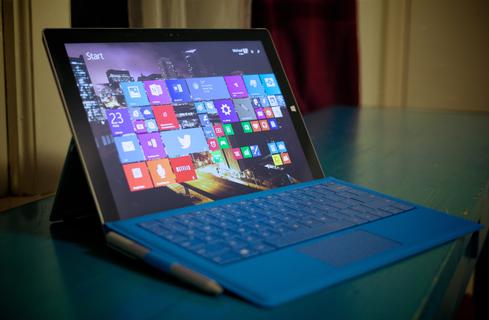Windows 8.1 Makes Gains, XP Hangs On
Windows 8.1 finally has more users than Windows 8, but both lag far behind Windows XP and Windows 7.


Surface Pro 3 Vs. World: Mobile Smackdown
Surface Pro 3 Vs. World: Mobile Smackdown (Click image for larger view and slideshow.)
Last month, more people used Windows 8.1 than Windows 8 -- the first time that's happened since the free update launched last fall. But Windows 7 remained the overall PC champion in May, expanding its share to just more than half the market. Ever-resilient Windows XP also placed ahead of Windows 8 and 8.1. Even though Microsoft has left it for dead, XP accounted for around a quarter of PC users last month.
The new figures, released by the web tracking firm Net Applications, reinforce that more XP holdouts have opted for Windows 7 than Windows 8. Now more than a decade old, Windows XP reached its end-of-support deadline in April, prompting millions to upgrade. Since January, Windows 7's market share has increased 2.6 percentage points, around 25% more than Windows 8 and 8.1's combined gain over the same period.
[Specific devices are over -- it's all about "personalized experiences" now. Read Microsoft's Nadella: We're In 'Post-PC' Era.]
Windows 7 held 50.06% of the PC market last month, up from 49.27% in April. Windows XP held on to 25.27% of users, down meaningfully from 26.29% in April and a sharp decline from 29.30% in January. Windows 8 slipped from 6.36% in April to 6.29% in May, while Windows 8.1 jumped from 5.88% to 6.35%. Combined, Windows 8/8.1 snared 12.64%, up from 12.24% in April and 10.49% at the start of the year.
Though finally starting to drop off, XP's sizable market share could mean millions of users rely on vulnerable machines. After terminating XP support in April, Microsoft gave the OS a one-time reprieve when it issued a security update in response to a new Internet Explorer bug. The company, which says most commercial XP customers have upgraded, has also discouraged users from implementing a recently discovered registry hack that enables XP-based PCs to procure updates for Windows Embedded POSReady 2009. The Embedded version is similar to XP and remains a supported product until 2019. However, Microsoft says updates designed for Embedded systems won't protect mainstream XP PCs -- a contention some online commentators have questioned.
Even if the hack were safe, Microsoft probably wouldn't admit it. After all, the company wants customers to upgrade to newer operating systems. But Wolfgang Kandek, CTO at the security vendor Qualys, agreed in an email that the hack probably isn't a wise option.
Users "have no way of knowing the side effects of these unauthorized and untested changes," he said. "It is a clever hack, and I am testing it on my virtual machines right now, but in production? Only if forced by higher powers."
Windows 8 and 8.1 also remain ongoing talking points. Windows 8 received poor marks from users and critics alike. Windows 8.1 incorporated several improvements, such as a boot-to-desktop mode, and earned better reviews. Nevertheless, user adoption has been slow. Even in May, Windows 8.1 snared only 50.2% of the combined Windows 8/8.1 share.
Still, Windows 8.1 posted a healthy jump from April to May, perhaps buoyed by a recent update designed to make the OS usable on nontouch hardware. However, the update still lacks one of users' most requested features: a Start menu like the one in Windows 7. Microsoft previewed a new Start menu in April, but it reportedly won't debut until 2015, possibly as part of Windows 9.
In the meantime, it remains to be seen if the recent update represents the start of a sustained Windows 8.1 upswing. The OS faces challenges due to not only its interface, but also opposition in China. Chinese authorities recently banned the use of Windows 8 on government devices. They cited post-XP security concerns, though political motivations are also ostensibly at play.
Overall, Net Applications found Windows operating systems accounted for 90.99% of the market, with Macs snaring 7.39% and Linux grabbing just 1.62%. Mac OS X 10.9 Mavericks was the top version of Apple's OS, with 4.15% of the market. Though Windows remained dominant overall, Apple has been more successful than Microsoft in moving users to its newest platforms. OS X Mavericks was free to most Mac users and accounts for more than 56% of OS X users overall. Windows 8.1 accounts for about 50.2% of combined Windows 8/8.1 users and a little less than 7% of all Windows users.
IT is turbocharging BYOD, but mobile security practices lag behind the growing risk. Also in the Mobile Security issue of InformationWeek: These seven factors are shaping the future of identity as we move to a digital world (free registration required).
About the Author(s)
You May Also Like
How to Amplify DevOps with DevSecOps
May 22, 2024Generative AI: Use Cases and Risks in 2024
May 29, 2024Smart Service Management
June 4, 2024







